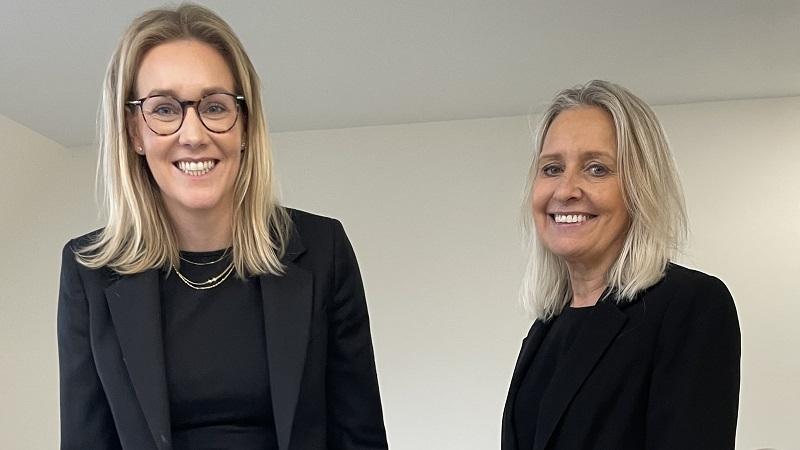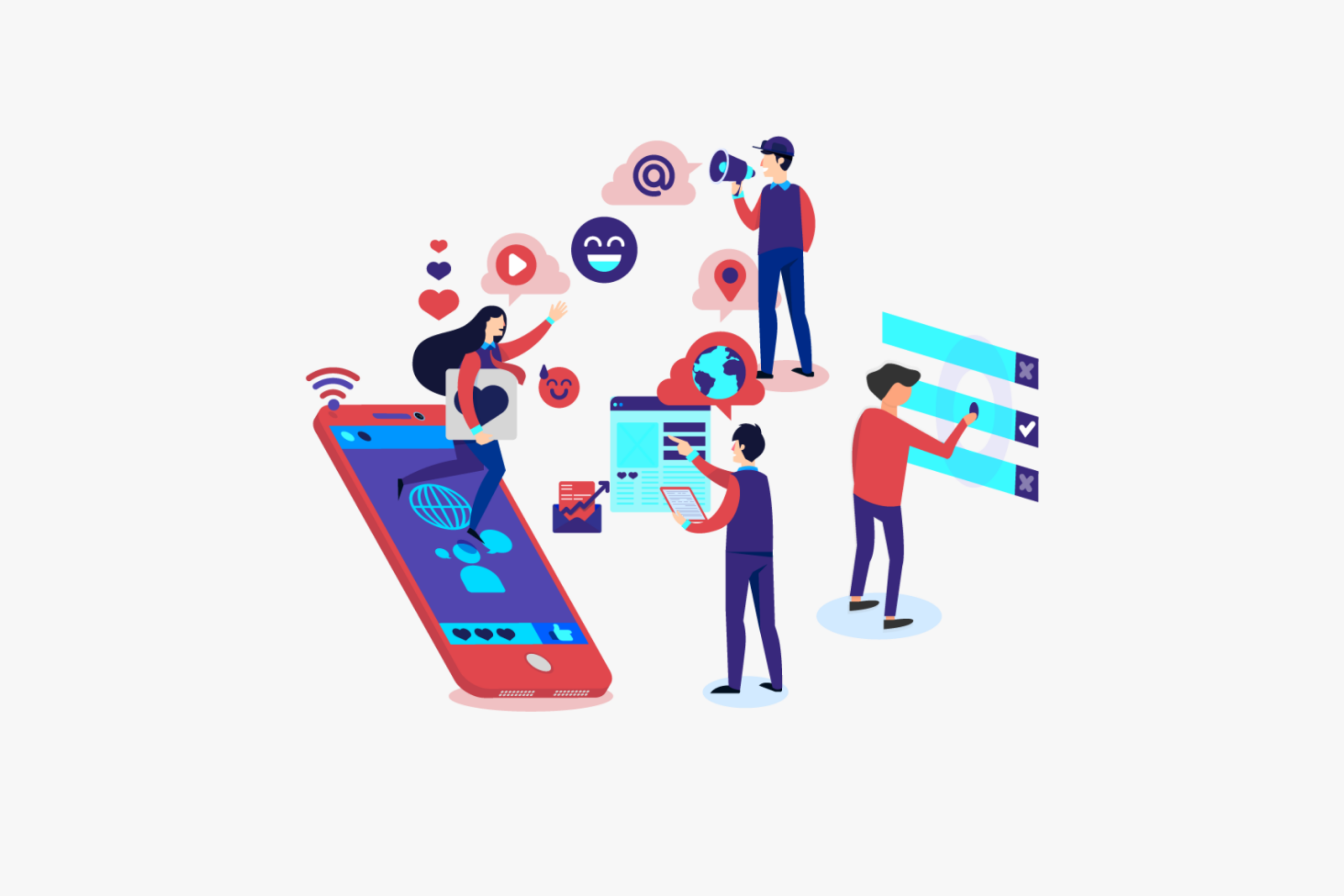In the first of a series of interviews with government’s biggest figures, PublicTechnology and CDDO caught up with Jo Farrar to discuss exploring virtual reality and AI, and why it’s time for civil servants to stop accepting outdated IT
Pictured above are Megan Lee Devlin (left) and Jo Farrar Credit: CDDO
You could say that Jo Farrar and digital go back a long way.
So much so that, early in her career in the civil service, she was there when the “the first computer in the office was wheeled in – and had to be shared by 20 people”.
As she reaches the end of four years at the Ministry of Justice – most recently serving as second permanent secretary, a role she combined for some time with that as chief executive of HM Prison and Probation Service – Farrar can look back and assess profound changes since then in government’s use of technology. As well as some areas where progress may have been slower.
The Central Digital and Data Office – which was spun out of sister agency the Government Digital Service in 2021 – was created to help provide such momentum, by spearheading transformation across departments. This includes leading government’s digital, data and technology profession and overseeing the creation and implementation of Transforming for a Digital Future, government’s three-year digital strategy published a year ago.
The Digital Leaders’ Download is a series of interviews brought to you by CDDO and PublicTechnology, in which the government unit’s chief executive Megan Lee Devlin will talk to a wide range of the civil service’s most senior leaders.
After introducing the series last week with an interview with Lee Devlin – in which she discussed CDDO’s work to measure and deliver great services, and help eliminate legacy IT risks – Jo Farrar met with Lee Devlin for the first Digital Leaders’ Download.
The former MoJ leader, who recently moved to a new post as the chief executive of NHS Blood and Transplant, discusses the transformative impact of technology in prisons, how digital is helping clear case backlogs, and why “innovation isn’t always about creating new things”.
Megan Lee Devlin: What does being a ‘digital leader’ mean to you?
Jo Farrar: It means being a role model, making sure that you encourage people to innovate, to use digital to think differently about how they’re designing their service – particularly operational services – to make the most of the technology we now have and just encouraging that excitement.
MLD: What excites you most about the role of digital and data in transforming government?
JF: Through Covid I was running the Prison and Probation Service and the new digital technology was one of the things that really helped us to move through Covid and save lives. We were able to do things differently in a completely constrained environment. Just seeing the role that digital would play – and new technology could play – was transformational. When it comes to data, just understanding what was happening, what we could do and what would make a difference was important. There are exciting opportunities as we advance in our technologies and in the way that we collect and use data. We can do so much more than we have been able to before.
MLD: I’ve heard you speak before about the way you use technology in prisons, around connecting prisoners with their families, that relationship and connectivity side. Is that the main benefit that you saw during the pandemic?
JF: There were lots of benefits. One particularly significant example comes to mind which was to do with visits to prisoners. During the pandemic we couldn’t allow visits. Prisoners can be distressed when they can’t see people who are important to them, so we were able to introduce digital visits. In fact, we’ve kept these going. So people whose families are not able to visit can still connect. We’ve also started digital video hearings for courts. Not having to escort someone to a court for early hearings, when you might just have to go and give very basic information, saves time and money. It saves the stress for everybody involved, including the prisoner. You’ll probably ask me about this later – what’s my favourite technology? – introducing in-cell technology for prisoners has just been a game-changer, as it allows prisoners to take responsibility for some of their own issues, freeing up staff time to deal with the things that are really important. This has been transformational.
MLD: I’d imagine that you’ve seen through that, not just improved efficiencies and operational day-to-day working but improved outcomes if you’re helping people through in-cell technology to do training.
JF: We’re growing the technology to include education, so it can be an extension of workshops or more formal education in prisons. But prisoners can also order the things they require and they can book appointments. All of the things that they would have had to wait to see a member of staff for. So when they need to see a prisoner officer, it can be to talk about the things that are really important.
MLD: It’s such a powerful example, in-cell technology. What is your favourite emerging technology that could powerfully transform the way we as a government do business?
JF: The in-cell technology has so much potential, but we’ve also been experimenting with things like virtual reality for training to give people the experience of being in prison or working elsewhere. I think there is some potential here. We haven’t introduced this yet, but that’s something we’re thinking about.
MLD: Is that about training MoJ colleagues in empathy and understanding what the prison experience is like?
JF: We could use it for that. Mostly, we’re thinking of using it for new recruits. Before you’re recruited you can gain an understanding of what the work environment is like, what prisons are like. It’s a different environment for people so giving people that immersive experience might be quite helpful. As I said, we haven’t gone there yet but I think this might be something for the future, help people with their training and development.
MLD: With virtual reality the opportunities are so enormous and the technology exists and it’s really just about us better leveraging it. We could be using it at scale at the DfE around the way we build training into our core education systems. Huge opportunity there.
JF: Last week, we were working with colleagues in India on court reform. We were able to look at how they’ve introduced AI to predict and use data in a different way. We have a lot to learn from others.
MLD: Absolutely, from the policymaking side as well; we just came off this morning talking about ChatGPT with colleagues: what’s our guidance around the use of that across government? When you think about it, it’s the most amazing research tool for people right at your fingertips and you can ask it to build your code which you can then copy and paste and execute, having those huge amount of tools at your fingertips.
JF: Without you having to search thousands and thousands of documents, you could find all of the cases that might be relevant to the decision you’re taking. Just another example of something that could be quite exciting.
MLD: What has your department achieved through digital and data in the last 6-12 months that you’ve been especially proud of, and how this might have positively impacted the public?
JF: The Office of Public Guardian (OPG) has used technology to help reduce its backlog, I think is a really good example. It’s really important to the public to have a Lasting Power of Attorney facility and making sure applications are dealt with quickly. The way that The Office of the Public Guardian has used innovative approaches to reduce its backlog is excellent and the OPG is the first department in the Ministry of Justice to get rid of all of its technical debt.
MLD: And they did that by transforming into more modern technologies…
JF: And redesigning their processes as well, not just plonking technology onto the way they’ve always done things but redesigning processes and moving from more outdated systems to a system that’s fit for purpose. I think that’s been brilliant.
MLD: That’s a huge achievement and one that we should absolutely publicise more broadly across our DDatT community because very few organisations have been able to achieve that.
JF: It is one of the few that has and has done it well. And it’s an important service to the public so you can see the difference that it makes. It’s as simple as using high-tech scanners to automate processes, just having a modern system is really positive.
MLD: Fantastic! I was talking to Doug Gurr yesterday who’s now at the Natural History Museum. He was previously at Amazon. He joins our Digital and Data Board. I was asking him how they use technology in the museum and one of the interesting things was a scanning technology which is cataloguing their 80 million artefacts, getting dimensions, reading the handwriting of the Victorian collectors, even the most basic technology still has enormous files.
JF: We should remember innovation isn’t always about creating things that are new, it’s thinking about what we have and how we use that to solve an existing problem, and enhance it so that it does that well.
MLD: Something that I feel quite passionate about, this is just a side note but just to sense check if this resonates, in government we’re very good at doing new things digitally and well but actually very rarely do we achieve some of these big transformations to our existing things which is really hard because you have to prioritise, you have simplify the processes, you have to do these big, complex change programmes to really see them through and that takes three, four, five, years. I suppose that’s what I’m hoping that, through this senior civil service engagement piece, it’s also about helping them to understand digital is not only for the new things but there are ways for you to do what you’re already doing better, quicker, more efficiently. The OPG is a fantastic one – really, really impressive. But what’s one lesson you’ve learnt when things haven’t perhaps gone so well?
JF: I think we struggle with some of our systems because they are very old. If you take the Legal Aid Agency for example, we have 86 different systems for legal aid and every time there’s a change we have to manually add data to all of those systems. For me, having outdated systems and not being able to redesign processes makes things very complex. One of the lessons I’ve learnt is that we must keep updating technology, making sure we don’t do something once and think that’s done. We must think about smaller investments to make sure that we’re keeping things up to date and not ending up with a big legacy problem.
MLD: Do you think this is a problem for SCS – for all SCS – to be on top of their legacy, what technical debt is? I’ve had quite a few conversations with SCS and they’ve said to me, ‘I can go find my CDO [chief digital officer] to talk to about it’ when they actually own the systems, it’s part of their ecosystem in their team. So I wonder, how do we make sure we’re reinforcing that message; a core competency of being a modern civil servant is understanding what legacy debt is, what technology debt is.
JF: We now live in an environment where technology is more influential, able to help us. As civil servants, we need to understand that. We need to be able to use it, understand how it can help us, but also how it can hinder us. The chief digital officer is there to facilitate and to help us improve but they won’t always have the understanding of the services so it’s up to the SCS to think about what outcomes we’re trying to achieve and talking to our digital teams about how can we use digital and data to be able to transform our systems so that they give us the outcomes that we want. That’s what we own individually as the SCS: we own the outcomes.
MLD: I was in a supplier round table with CEOs recently and there were all the Big Tech companies: Google, Microsoft, Amazon but then a lot of the EYs and so on. Alex Chisholm [permanent secretary for the Cabinet Office] was chairing and he asked, ‘what’s the difference between how you work with the government versus how you work with the private sector?’ And almost unanimously they said the private sector is always pushing us much further on digital whereas when we talk to government colleagues, the fluency isn’t there. They’re not pushing us. We can get our oldest technology off the shelf and they’ll still be content. There’s that intelligent customer op piece that’s missing. I do wonder how we understand that. Is there a bit of concern that ‘I’m not fluent in this topic so I don’t want to talk about it’?
JF: In the civil service people do accept outdated technologies in a way that you just wouldn’t in other organisations. To be honest, the next generation of senior civil servants are used to using technology and will have different expectations, so I think people do need to talk about it and become more fluent.
MLD: You don’t need to know how generative AI works but what you do need to know is to ask good questions: what new technologies are you thinking about to transform this service? Are we using agile ways of working? Really just simple questions that help the teams to understand actually I need to be doing this in cutting edge ways and the expectation is there.
JF: Exactly. Or just presenting a problem. Having a range of people including people who really understand digital asking: how do we solve this problem? How can digital really help us with that? Something that seems insurmountable, but where there might be a digital solution that none of us have thought of. I think we used that type of thinking during Covid and we need to make sure that we’re still doing this.

MLD: What do you hope government will have achieved by 2025?
JF: 2025 is not far away. As you said, it takes a few years to really transform but I think that if we can have excitement, and curiosity and see the initial benefits and dividends for things we’re doing now, and have examples to show how much we’ve transformed through digital, I think I’d be really happy with that.
MLD: Absolutely, and a couple of brilliant examples of how to do things well. You might be interested to know we’re doing our top 75 transformation work. That’s showing around 15% of our services are great, but what we have been doing is leaning in and supporting some of the services where they’ve said: ‘We just need a bit of help, can you come and work with us?’ They’ve been really open to that which has been fantastic to see. We’re working with the fostering service as part of the top 75 transformation and what we discovered was, local fostering is obviously the approach that is used in the UK, but we’ve brought it to a regional level. We can save £600m which is just an unfathomable amount of money by levelling up supply and demand across regional areas. And that’s just following the existing strategy that’s in place but with a thin digital layer that connects up local authorities, encourages them to share data and take children out of the care system and into foster homes. The outcomes are just extraordinary. It’s those kinds of use cases where we can show just how powerful it is and the impact it can have.
Finally, a more personal question, can you tell us a little bit about your career path so far to become a digital leader, and what advice you might give to any other women considering a career in DDaT?
JF: I started in the civil service and in public services at the time when digital just wasn’t a factor. Everything was on paper. We had our first computer in the office and it was wheeled in and we had to share it with 20 people. So, I’ve seen the massive transformation and that really excites me.
MLD: What did it do?
JF: The first computer? Not very much! We poured a lot of data into it and it probably stored it somewhere. But it didn’t really give me anything back. We’ve moved away from mass processing of files on paper to where we are now, where we can really do things that are properly transformative. You were talking about the innovations with foster care, that’s why I’ve become a digital leader to make a difference to people. I’ve seen what things were like before and how they could be, and I can just see there’s so much more potential to embrace. That’s what excites me and that’s why I think it’s important. That’s why all the SCS should be excited and involved and curious. If I can do it, as somebody who didn’t grow up with technology, then there’s no excuse for anybody else is there?! All careers should be open to everybody. This is an exciting area to be involved in.
PublicTechnology will publish lots more in our series of Digital Leaders’ Download interviews over the coming weeks and months, featuring exclusive conversations between Megan Lee Devlin and senior leaders including HMRC chief executive Jim Harra, Home Office permanent secretary Matthew Rycroft, and HM Treasury’s Cat Little, head of government’s Finance Function.
Catch up here on our interview with Lee Devlin – including insights into eliminating departments’ biggest legacy risks, unlocking £8bn of technology investment, and the rollout so far of government’s three-year digital strategy.




